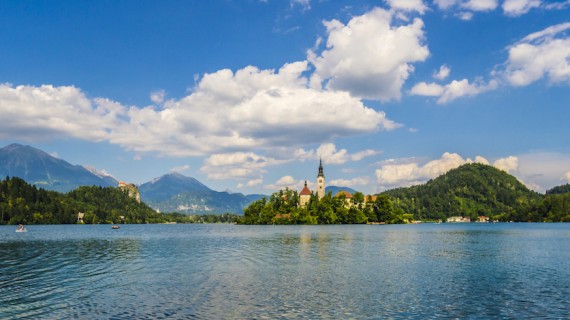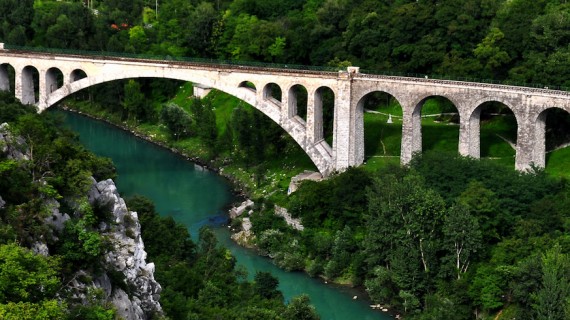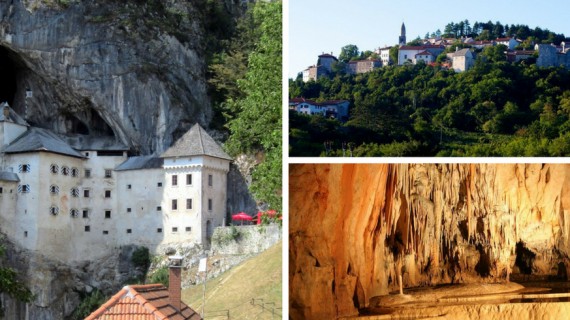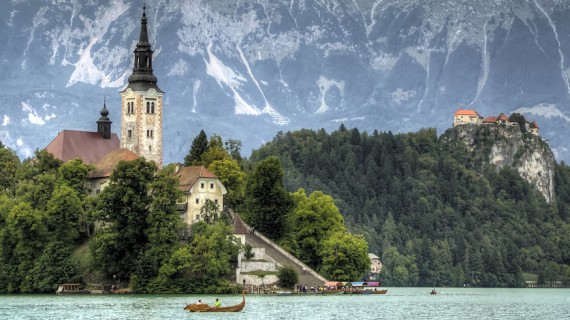An atmosphere, frozen in time, among snow-covered peaks and quiet landscapes. A romantic castle on the mountain, where ancient myths and modern soap-operas take place. A boatman tells us the stories of the place while paddling towards the enchanted islet in the middle of the lake. Bled is the perfect destination for green tourism, and according to Lonely Planet, it is in third place in the “locations to visit in 2018” list. We couldn’t go and tell you the 9 best things not to miss this Alpine Pearl.
As soon as we arrived in Bled, in the heart of Alps Giulie, we breathed an atmosphere of silence that seemed almost surreal and frozen in time. Just a little bit more than an hour away from Italy, Bled is perfect for those who love sustainable tourism and want to have a romantic getaway.
In the past, Bled has always been an inspiration for poets and men of Letters and today it is one the most beautiful destination that promotes green tourism, and the third location to visit in the world according to Lonely Planet!
When we arrived in Bled, it was surrounded by autumn warm and bright colors, by the smell of Saint Martin’s Day’s wine, music, and traditional songs. We discovered Bled’s landscape and treasures together with the Alpine pearls’ friends and we were delightfully surprised.
What were the most surprising things about Bled? There are at least 9 things which left us mesmerized, 9 good reasons to visit it, 9 reasons not to miss this wonderful Alpine Pearl, and here they are:
1. Sailing on the lake aboard a “pletna”
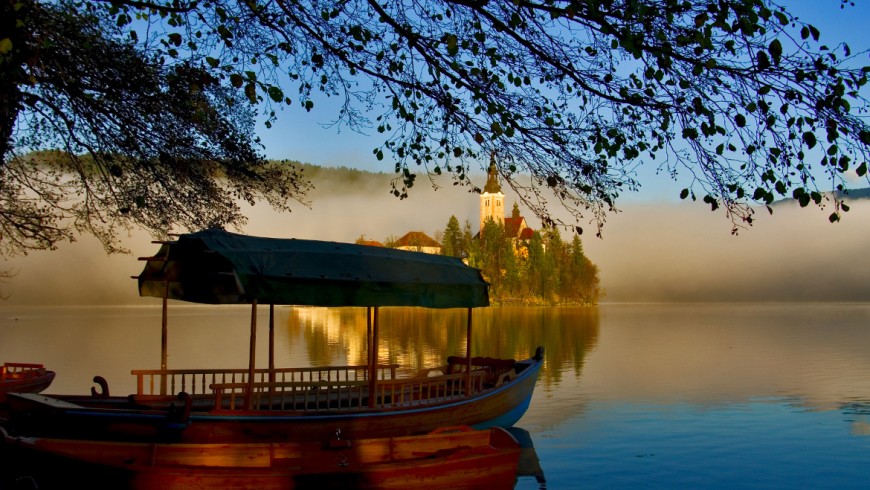
First of all, we get aboard a “pletna“, Bled’s traditional boat. The boatman tells us that the boat has German origins and it is famous for its shape, quite flat and not very deep, which ensures that it has a great balance on the water. We are actually 8 people on the boat, so when one moves a bit the whole boat starts to swing. Fortunately, the boatman knows exactly how to arrange our positions in order to distribute the weight.
While driving the boat on the lake’s still waters with two big wooden oars, he tells us the real stories of Bled, such as the one about his job, passed down through generations of families. He inherited the job from his grandfather and the families who can drive a pletna in Bled are now 25 in total.
We leave dry land behind and the islet becomes bigger and closer, surrounded by a fairy blue sky, with grey and white shades, typical of the autumn fog.
And now it is time for the story of the 5 villages from which Bled was born. One of these is Mill village, between the mountains and the river that enters the lake. Since the inhabitants of this village didn’t have much land to cultivate on, unlike the other villages, they were allowed to fish in the lake or to drive the typical boats.
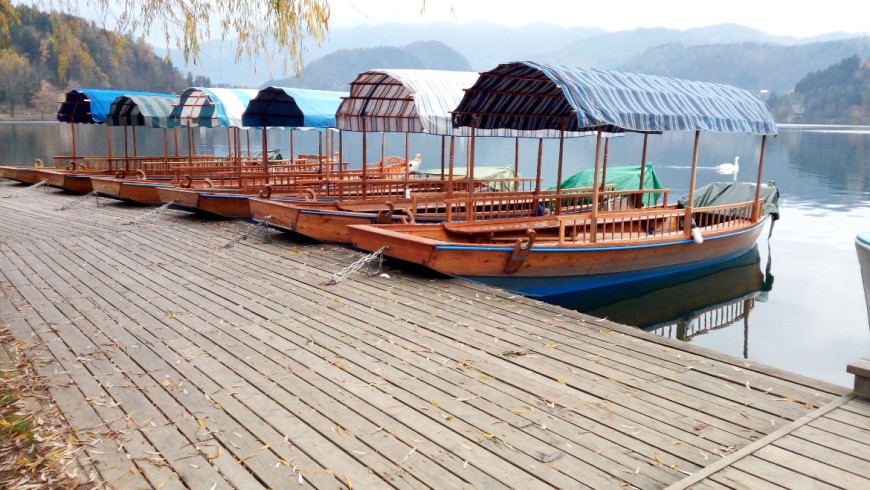
Clearly, we appreciated the fact that boats with engines and made of plastic are forbidden on the lake, and only wooden and electrical boats are permitted. Not polluting the environment and respecting nature is a priority for the development of sustainable tourism in Bled. You can also go through the lake with a canoe, but only if you own one as there are no canoes to rent.
2. Discover the island and ring the wishing bell
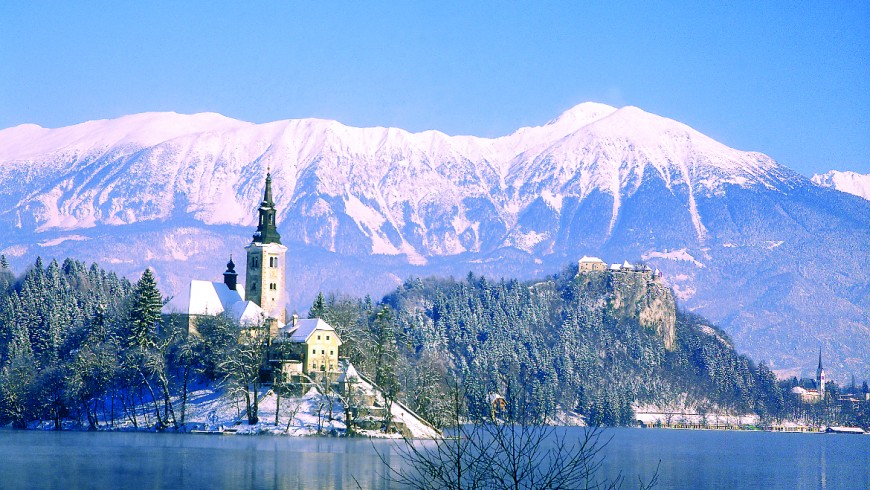
There is something magical about this island in the middle of the lake. Legend has it that a long time ago a young widow used to live right there on the islet. Her husband had been killed and thrown in the lake. The woman put together all her gold and jewellery and made a bell out of them, that was going to be installed in the little chapel on the islet. Nevertheless, a sudden storm made the boat carrying the bell sink, and everything in it got lost in the lake.
People in Bled tell that still nowadays, who passes through the lake at night can hear the bell ringing from the deepest water of the lake. But how did the story end? After losing the belt, the woman decided to donate all her havings for the construction of a new church on the island and afterward she retired in a convent. However, her father made a new bell that managed to reach the island and became the wishing bell: you can ring the bell, and one of your wishes may become true.
We have now arrived at the island. We go up the stairs and reach the chapel, where each one of us rings the famous bell and makes a wish, hoping it’ll become a reality. We also discover that every year on Christmas’ Day, a luminous bell is installed on the lake, as a symbol of this ancient myth.
The most charming aspect of the island is its silence: every sound is perceptible, even the smallest ones, such as birds flying or boats floating on the lake. We find out that the island was inhabited since prehistory and that during the 18th century the women of Bled protected the islet from invasors. The last people living on the island left about 40 years ago, leaving behind their pretty houses made of light stones and their barns where each one of them kept their cows.
- On the islet of Bled
- Ancient building on the island
- The clock inside the bell tower
We reach the bell tower of the church, observing some objects on the wall which were used to measure time in the past, even the big pendulum clock which counts every second in the surreal silence of the place. Afterward we enter an ancient building to admire some works of art and traditional stoves.
Before leaving, we have a break to warm up thanks to a hot tea and we also get to taste a traditional Slovenian cake, the putizza, in the “Provost’s House”, ancient building on the island.
3. Walking or riding around Bled’s lake
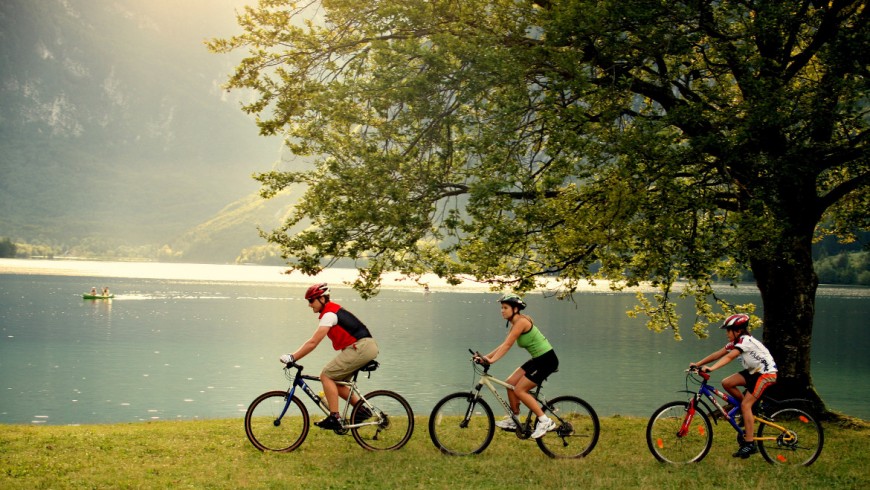
One of the most important Slovenian poet, France Preseren, said that no place except Bled is worthy to have on its face the image of heaven. In order to appreciate even more every corner of the town, we suggest you move around slowly, either on foot or by bike. The tour that goes around the lake offers unbelievably beautiful views. The path is about 6 km long and lasts one hour and a half if you go on foot. It is ideal for families with children also because there are many spots where you can sit and take a break but also take a lot of selfies.
4. Conquering the romantic Castle of Bled

Another glimpse of Bled can be seen from above one of the most ancient castles in Slovenia. The castle, entirely built among rocks, looks almost like Magritte‘s surreal painting “Le chateau des Pyrénées“, don’t you think? And from far far away it almost looks like it is hanging in the green above the lake.
We find out straight away that the castle has been chosen as setting for the famous Korean soap opera “Dear my Friends“, which we allegedly suspected after having seen loads of Korean visitors. The mayor tells us that after the romantic drama came out, the number of Korean tourists reached 20% of the total visits.
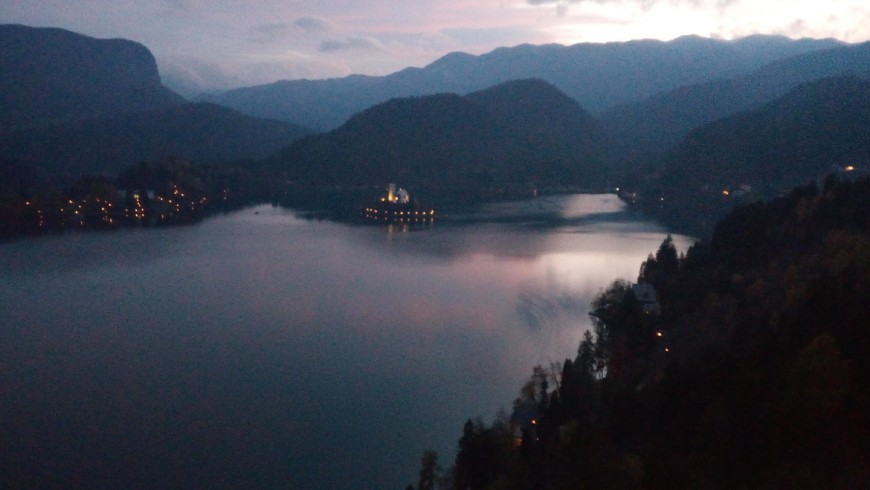
- Entrance of the Castle
- The Castle of Bled
- Printing room in the castle
From the lake, we climb up the peak of the mountain through a wonderful green path, which by night is enlightened by many small and misty lights. Step after step, the itinerary offers many different views of Bled.
A drawbridge made of wood marks the entrance of the castle, its courtyards give us a breath-taking view of the lake and mountains around. You can almost see the whole region of Gorenjska, between the Alps Giulie and the high peaks of Caravanche.
In the lower courtyard, there is an ancient printing house, where you can still snoop around old papers and stamps, and an apiculture shop, the Castle’s beehive. Meanwhile, in the upper yard, we find a lovely chapel from the 16th century and a two-levels Museum, which narrates the story of Bled from Bronze Age to the present day.
In addition… for those who want to enjoy a gastronomic and very romantic break, inside the castle there is a lovely restaurant with a terrace and a bar.
5. A green break: from glamping to bio hotels

- Eco camping in Bled
- Glamping
- Glamping Ribno in Bled
Bled, and Slovenia in general looks perfect for those who wish to spend a sustainable holiday. From glamping in the green nature to a five stars hotel, the suggestions for a green vacation are plenty. Slovenia promotes this kind of tourism with the brand “Slovenia Green“, which encourages owners to follow disciplinary rules to reduce their environmental impact and obtain an internationally recognized certification, such as the European Ecolabel.
In Slovenia, sustainability is an essential part of national legislation and the country is in fifth place in the Index of environmental performance. Recently, Slovenia has been recognized by the international organization Green destinations as the first green destination in the world, as it respects 96% of 100 sustainability criteria.
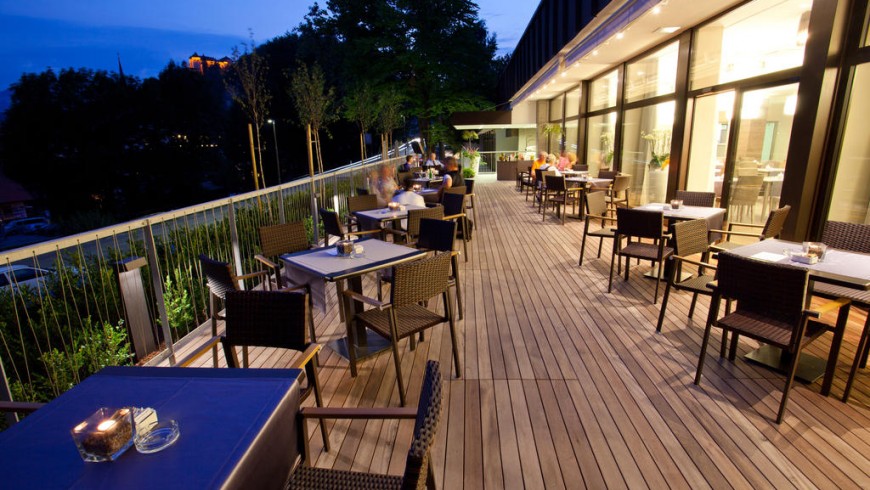
- Hotel Astoria spa
- Hotel Astoria, Bled
- Hotel Astoria’s room
We are staying in Hotel Astoria, in the heart of Bled, a hotel with a long history: during World War II it was occupied by soldiers and after Yugoslavia was divided, it was bought by the Slovenian Ministry of Sport and Education, which renewed the hotel in 2014 investing in environmental sustainability. In 2016 the hotel received the European Ecolabel, because of its smart use of renewable resources, solar energy, recycling, natural and bio detergents. Thanks to all these, residual waste has decreased by 35% in the last two years.
Sabina, the hotel manager, tells us that they always tend to suggest biological food and local products to their guests, who actually appreciate it quite a lot. Moreover, as the hotel is part of the Ministry of education, many students apply for an internship there, where they get to learn a lot about the environment and its maintenance.
Therefore, the real challenge is to spread ecological actions and thoughts as much as possible, in order to increase the quality of the environment and bring it even higher than it is already. Hotel Astoria is surely a great choice if you want to spend a green holiday, as you can rent bicycles for free, eat local products or enjoy the wonderful spa.
6. Bled, a no-car and human-sized city
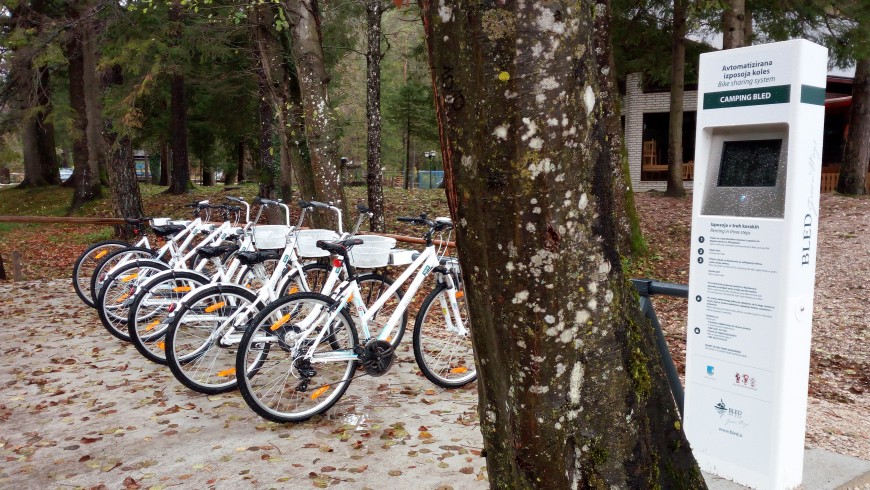
“If we plan a city for cars, we’ll have cars. If we plan a city for people, we’ll have people“. These words coming from Bled’s Mobility Director particularly struck me. Bled, together with the other 15 cities, adopted a plan for sustainable mobility which is financed by the Slovenian Government. The idea of the plan is to get rid of traffic in the city centre and transform a street and a parking area into a pedestrian public place. The project has already started with the removal of a road passing north of the lake, which has become a pedestrian area.
Therefore, Bled is now considered a friendly city for bicycles and accessible to all tourists who chose slow mobility. Bled became part of the Alpine Pearls, meaning locations in the Alps that are investing in green tourism.
7. Taste the wine during Saint Martin’s Day
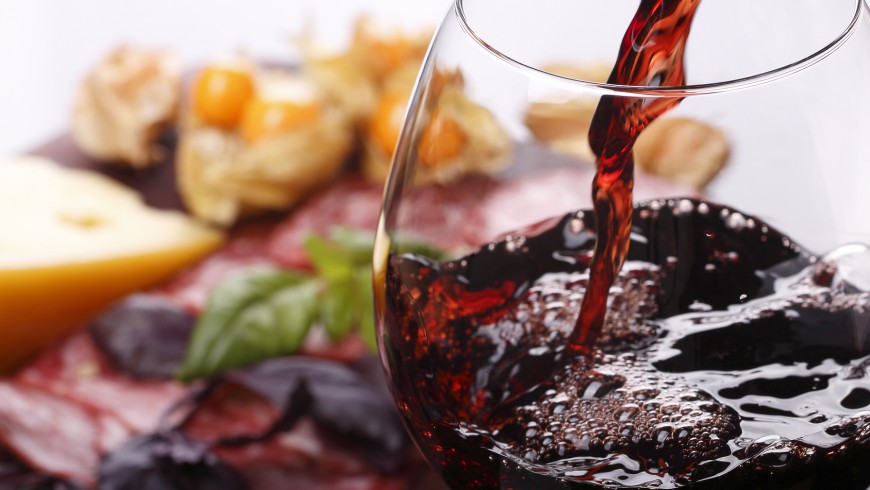
According to Slovenian culture and tradition, Saint Martin’s Day, on 11 November, is the right time to open a bottle of wine. This day is very important for all the rural areas tied to wine production. Those who visit Bled during St. Martin can enjoy this particular moment. It is a very modest celebration on the lake’s shore, with popular music and singing, where the farmers expose their best wine and offer tastings of local products. For the joy of the little ones, there are also plenty of animals. For example, we met a lovely little pony, which was trotting around in the park.
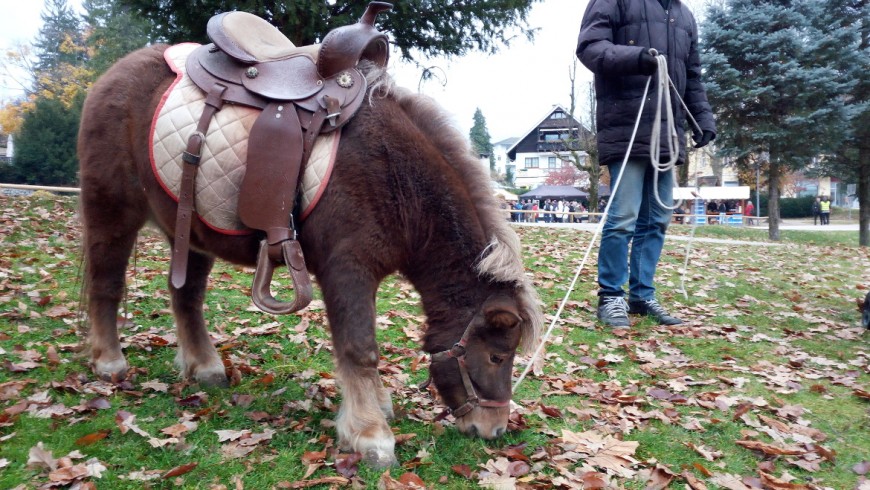
St. Martin’s Day is not the only occasion to celebrate in Bled as there are many other festivals to attend. For example, the Okarina Festival, between July and August and the suggestive Christmas markets as well.
8. Discover biodiversity and the Alpine landscape
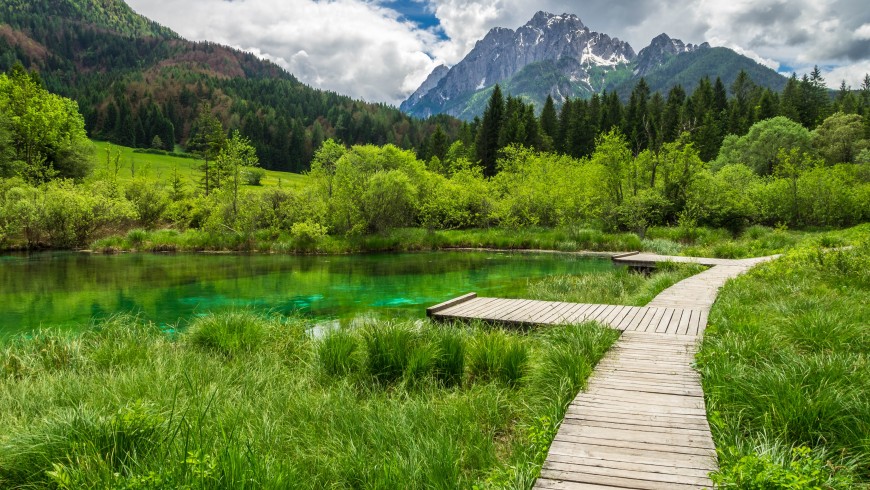
Many people think that cows are the most important domestic animals in the Alps, but they’re not. Bees are actually the most important. As regards wild animals, ants are the most crucial for biodiversity.
There is a wonderful interactive exhibition in Bled, more precisely in the info center Triglavska roza. The relationship between diversity, landscape, history, and local tradition is explained through the use of images and interactive boxes. A suggestive 8 minutes video shows the beauties of the Alpine landscape surrounding Bled.
9. Explore the wonders of the Triglav Natural Park
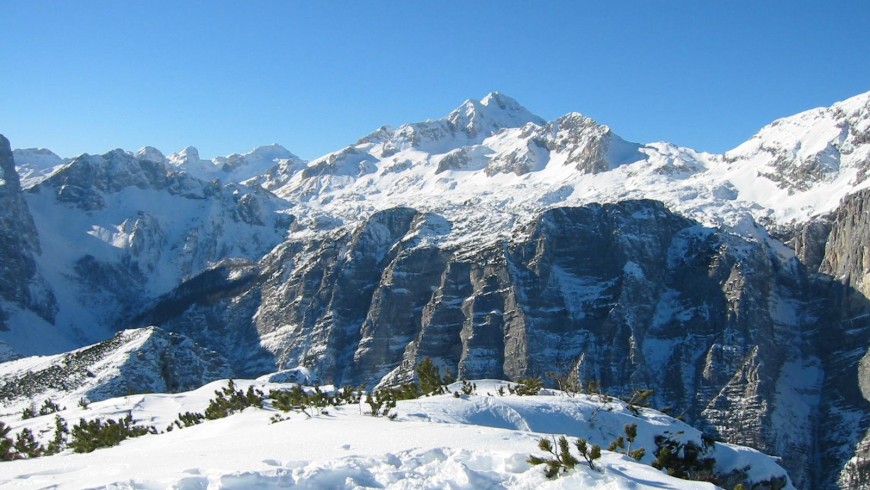
About natural beauties, Bled is near the amazing National Park of Triglav, the only Slovenian national park which surrounds Alps Giulie.
Bled is the perfect starting point to visit the Park of Triglav, in particular, Vintgar’s gorge, Pokljuka’s plateau, and Lake Bohinj. In winter, these places become a real paradise for those who love snow sports.
10. Dive into Bled’s natural thermae
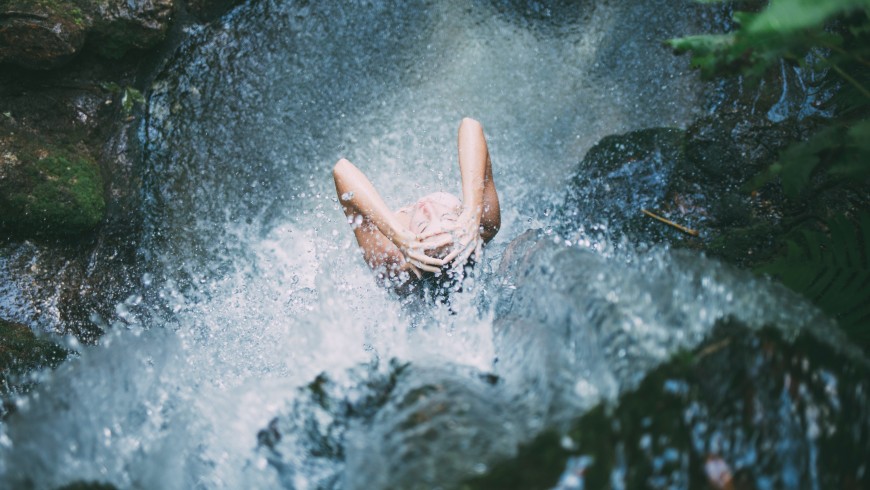
Those who prefer hot waters and fumes to ski must know that near the beautiful lake, there were once 7 sources of thermal waters. Nowadays there are 4 sources left, distributed in a semi-circle, from north to south on the west side of the lake, and they are channeled into three thermal swimming pools.
You can dive into the hot pools of Živa’s spa, whose thermal waters are warmed up at 31° to relieve stress. In Grand hotel Toplice, on the other hand, there are elegant thermal baths that offer benefits for your heart, nerve system and stomach. Furthermore, in Park Hotel, you can choose between thermal baths (27°C) or some moments of relaxing on the little terrace on the fifth floor, with an amazing view on the lake, the castle, and the Alps.
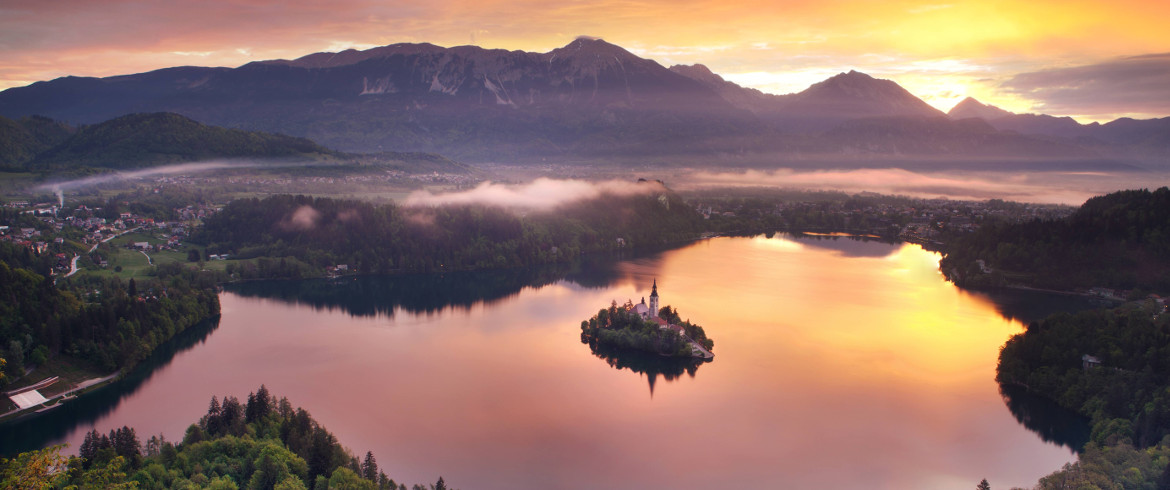
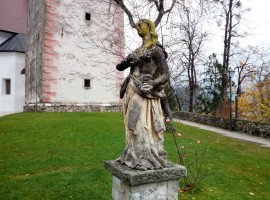
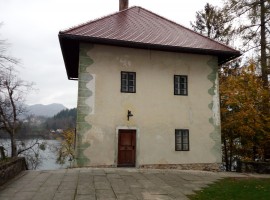
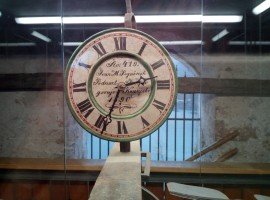
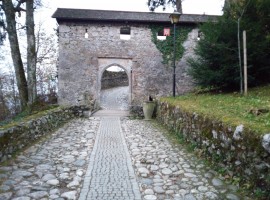



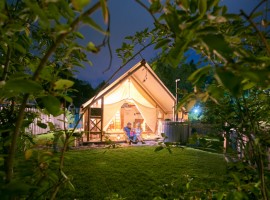
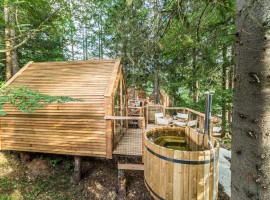
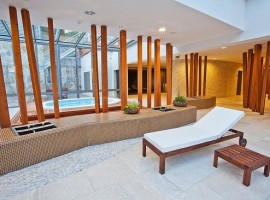
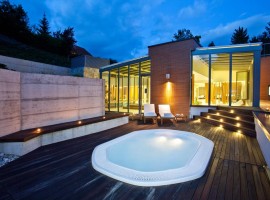
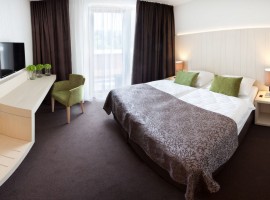
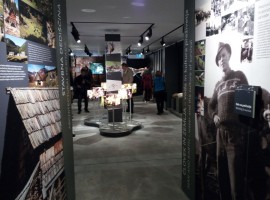
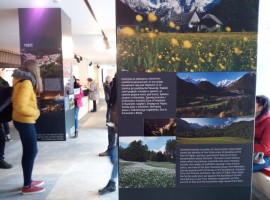
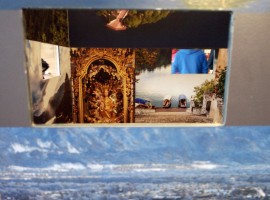
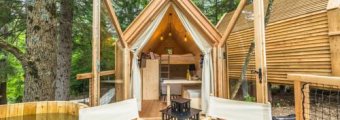 Hotel & Glamping RIBNO Bled – Green Hotel in Bled, Bled, Gorenjska, SI
Hotel & Glamping RIBNO Bled – Green Hotel in Bled, Bled, Gorenjska, SI 